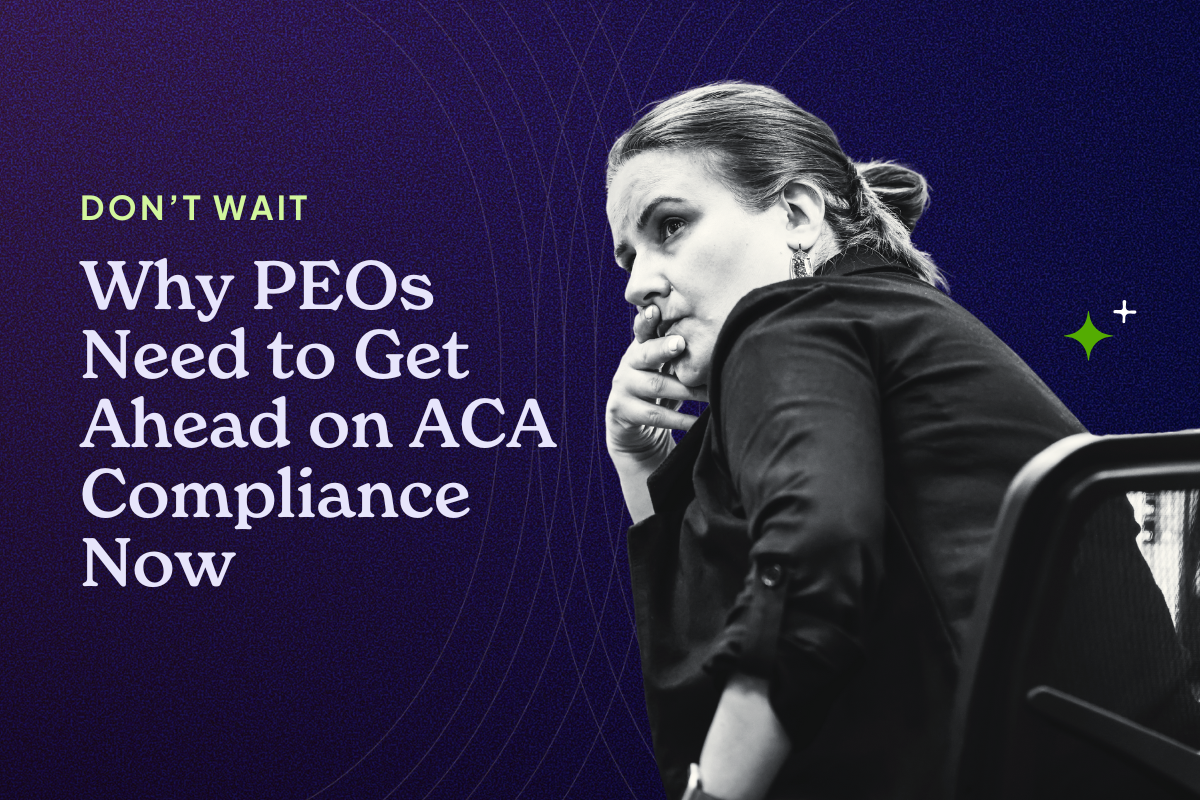Don’t Wait—Why PEOs Need to Get Ahead on ACA Compliance Now

“2025 Filing Season is closer than you think… let’s get your ACA ducks in a row now.”
Every year, too many PEOs wait until Q4—or even Q1—to address ACA reporting. On paper, it feels like there’s still plenty of time. In reality? Waiting puts both the PEO and its clients at risk.
Think of ACA compliance like air travel: you don’t want to be the person sprinting through the airport as the final boarding call echoes over the speakers. The earlier you check in, the smoother the trip. The same is true here—getting ahead of ACA preparation buys you breathing room, reduces stress, and avoids costly mistakes.
At Selerix, we work with PEOs nationwide, and we’ve seen the difference firsthand: those who start early have far fewer issues than those who wait.
Why Timing Matters for PEOs
IRS deadlines don’t care if you’re busy. Late is late.
PEOs already juggle complex client groups, and pushing ACA prep into the end-of-year rush magnifies every challenge. The earlier you onboard and begin data reviews—ideally before or by Q3—the more accurate the reporting will be, and the less risk of penalties caused by errors that slip through during rushed clean-up.
Early preparation isn’t just about compliance—it’s about capacity. When you give yourself and your ACA partner enough lead time, you smooth out the workload and ensure a cleaner, more confident reporting season.
The Dangers of Waiting
Waiting until the last minute creates a perfect storm of problems:
- Data chaos: Year-end clean-up is harder, and mistakes are more likely to sneak past.
- Penalty exposure: Late or incorrect filings can trigger failure-to-file penalties or ACA 4980H penalties, which can stack quickly.
- Client trust at risk: A compliance slip-up reflects poorly on the PEO—even if the cause was rushed reporting.
- System strain: January brings competing deadlines (W-2s, ACA, and other reporting), and waiting adds unnecessary stress.
- Complex cases get overlooked: Clients with ICHRA or age-banded plans require manual setup. Rushing leaves little room to get these right.
- Mid-year transitions add pressure: Clients who close mid-year still require reporting, and those who onboard mid-year need supplemental data pulled together.
And some mistakes simply can’t be fixed once the year is over. For example, measurement/ACA tracking issues are much harder to resolve under time pressure—you can’t retroactively offer coverage to employees who should have been offered earlier.
The Benefits of Getting Ahead
Starting early gives PEOs what we like to call compliance breathing room—time to double-check data, run validations, and solve tricky cases without the January panic.
- Complete validation: Confirm ALE status, verify plan data, and make sure part-time employees are properly tracked.
- Affordability checks: Work with your ACA partner to confirm plan affordability and make adjustments before it’s too late.
- Confidence in accuracy: Know that all data is reported correctly, significantly reducing the chance of penalties.
- Stronger partnerships: When you start early, you and your ACA partner have the space to solve complex issues (like rehires, employees working across multiple locations, or overlapping measurement periods) without scrambling.
The difference between waiting and starting early is the difference between racing the clock and calmly knowing you’ve got everything handled.
How to Start Preparing Now
Getting ahead doesn’t mean overhauling your entire process overnight—it means taking the right first steps now:
- Review client rosters and data for accuracy. Start with FTE counts to determine which entities need to report.
- Evaluate control groups. Confirm compliance for Aggregated ALEs (employers with different FEINs but common ownership that count as one ALE under ACA rules).
- Check eligibility tracking. Make sure you have a reliable process to evaluate employee eligibility for coverage (ACA Tracking).
- Run key reports. Use last year’s FTE report to determine this year’s reporting requirements.
- Audit non-full-time employees. Have they crossed 130 hours in their measurement period? If so, have they been offered coverage?
These steps may feel small now, but they make a world of difference when deadlines approach.
Selerix’s Role as a Partner
ACA compliance is a heavy lift, but you don’t have to do it alone. At Selerix, we specialize in helping PEOs navigate these complexities. Our team works with PEOs nationwide, and we know from experience: the earlier you start, the smoother it goes.
That’s why now is the time to connect—not in the middle of the January crunch.
Talk to us now to avoid the year-end crush.
Subscribe for the latest ACA updates.
If you’ll be at NAPEO, come see us at booth 315 to chat about how to get ahead this year.

